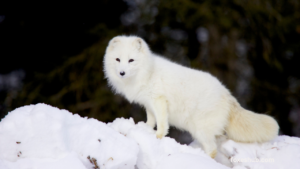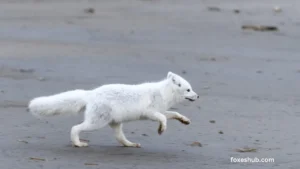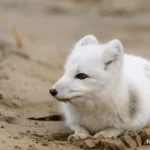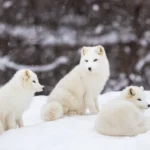The Arctic fox (Vulpes lagopus) is a captivating creature that inhabits the Arctic tundra, with a range extending across the Arctic regions of North America, Europe, and Asia.
These resilient animals have evolved various adaptations to survive in the harsh and unforgiving Arctic environment, and one of the most fascinating aspects of their behavior is their approach to surviving the extreme cold during winter.
In this article, we will delve into the question of whether or not Arctic foxes hibernate, exploring their unique survival strategies and shedding light on the intriguing behaviors of these remarkable animals.
Contents
- 1 Understanding Hibernation
- 2 Arctic Fox Adaptations
- 3 Winter Strategies
- 4 Denning Behavior
- 5 Conclusion
- 6 FAQs
- 6.1 Do Arctic foxes hibernate?
- 6.2 What are the hibernation adaptations of Arctic foxes?
- 6.3 How do Arctic foxes survive the long, dark Arctic winter?
- 6.4 What is the role of hibernation adaptations in the reproductive success of Arctic foxes?
- 6.5 How do hibernation adaptations of Arctic foxes contribute to the broader understanding of animal survival strategies?
Understanding Hibernation
To fully comprehend the hibernation patterns of Arctic foxes, it is essential to grasp the concept of hibernation itself. Hibernation is a state of dormancy exhibited by certain animals during the winter months, characterized by a significant decrease in metabolic rate, body temperature, and overall activity.
This adaptation allows animals to conserve energy and survive prolonged periods of food scarcity and harsh environmental conditions.
Arctic Fox Adaptations
Arctic foxes have evolved an array of physiological and behavioral adaptations to thrive in their frigid habitat. Their thick, double-layered fur, which changes color with the seasons, provides exceptional insulation against the cold, while their compact size reduces surface area and minimizes heat loss.
Furthermore, their rounded bodies and short legs help to conserve heat, enabling them to navigate the snow-covered terrain with agility and efficiency.
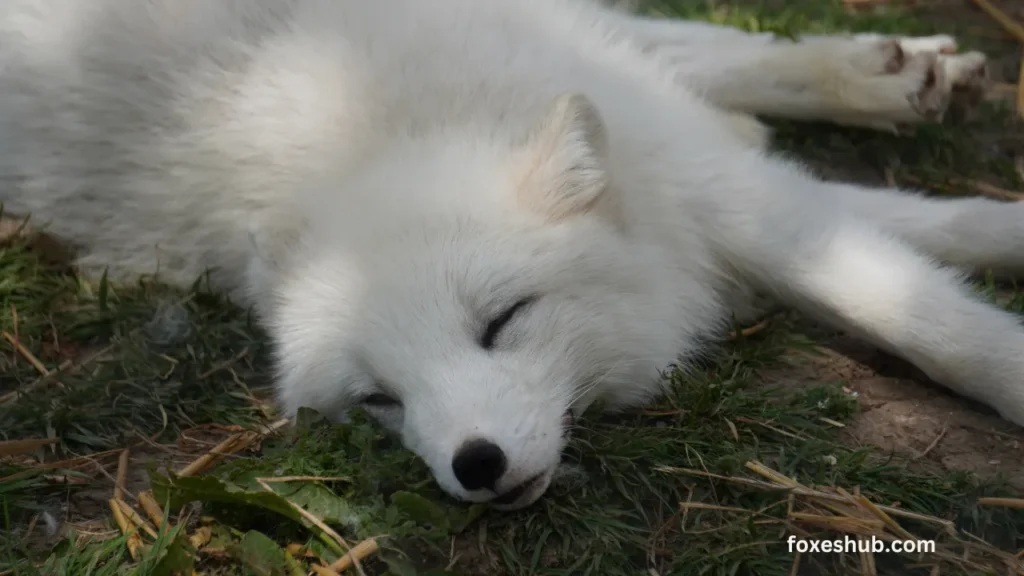
Winter Strategies
Unlike many other hibernating animals, Arctic foxes do not enter a state of true hibernation. Instead, they employ a range of survival strategies to endure the harsh Arctic winter. These strategies include:
- Seasonal Coat Changes: Arctic foxes exhibit a remarkable adaptation known as seasonal coat changes. During the transition from summer to winter, their brown or gray summer coat is replaced by a thick, plush white coat, providing superb camouflage against the snow and enhancing their insulation.
- Food Storage: In preparation for the winter months when food sources are scarce, Arctic foxes are known to hoard and bury excess food, such as lemmings, birds, eggs, and carrion, in shallow holes or beneath the snow. This behavior allows them to access sustenance during periods when prey is scarce.
- Reduced Activity: While Arctic foxes do not hibernate in the traditional sense, they do exhibit reduced activity during the winter, often retreating to their dens during extreme weather conditions to conserve energy and avoid exposure to the elements.
Denning Behavior
Denning is a crucial aspect of the winter survival strategy employed by Arctic foxes. These animals are adept at constructing and utilizing complex dens, which serve as shelters against the biting cold and fierce Arctic winds.
Arctic fox dens are typically constructed in the permafrost, utilizing the insulating properties of the frozen ground to maintain a relatively stable temperature within the den. Within these dens, Arctic foxes can rear their young and seek refuge from the elements, demonstrating their remarkable resourcefulness in adapting to their challenging environment.
Conclusion
In conclusion, Arctic foxes do not hibernate in the traditional sense, but they do showcase a range of remarkable adaptations and survival strategies to endure the rigors of the Arctic winter.
From their distinctive seasonal coat changes to their prowess in food storage and their utilization of complex dens, these resilient creatures exemplify the resilience and adaptability of wildlife in extreme environments.
By understanding and appreciating the unique behaviors of Arctic foxes, we gain valuable insights into the marvels of nature and the diverse ways in which animals have evolved to thrive in the face of adversity.
In essence, the ability of Arctic foxes to endure the challenging conditions of their environment serves as a testament to the resilience and resourcefulness of the natural world, offering a profound glimpse into the incredible adaptability and survival strategies of these remarkable creatures.
FAQs
Do Arctic foxes hibernate?
Arctic foxes do not hibernate in the traditional sense, but they exhibit adaptations for surviving harsh winter conditions, including behaviors such as decreasing activity and seeking shelter during extreme weather.
What are the hibernation adaptations of Arctic foxes?
Arctic foxes have several adaptations for surviving harsh winters, including growing a thick, insulating fur coat, storing excess body fat for energy reserves, and utilizing dens for shelter and warmth during extreme weather conditions.
How do Arctic foxes survive the long, dark Arctic winter?
Arctic foxes survive the long, dark Arctic winter by reducing metabolic rates, minimizing activity during periods of scarcity, and relying on their stored fat reserves as an energy source.
What is the role of hibernation adaptations in the reproductive success of Arctic foxes?
The hibernation adaptations of Arctic foxes play a critical role in their reproductive success by enabling them to conserve energy during lean periods and providing protection for their offspring in sheltered dens, ensuring the survival of the next generation.
How do hibernation adaptations of Arctic foxes contribute to the broader understanding of animal survival strategies?
Studying the hibernation adaptations of Arctic foxes offers valuable insights into the diverse ways in which animals have evolved to thrive in extreme environments, contributing to our understanding of ecological processes, evolutionary biology, and the intricate balance of survival strategies in the natural world.


